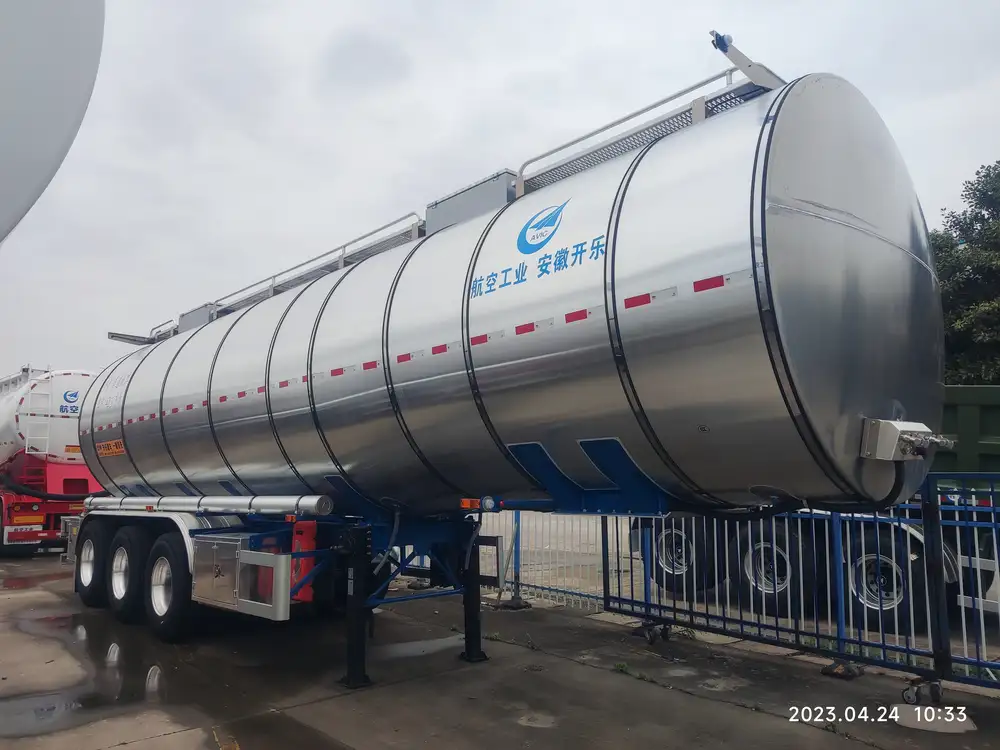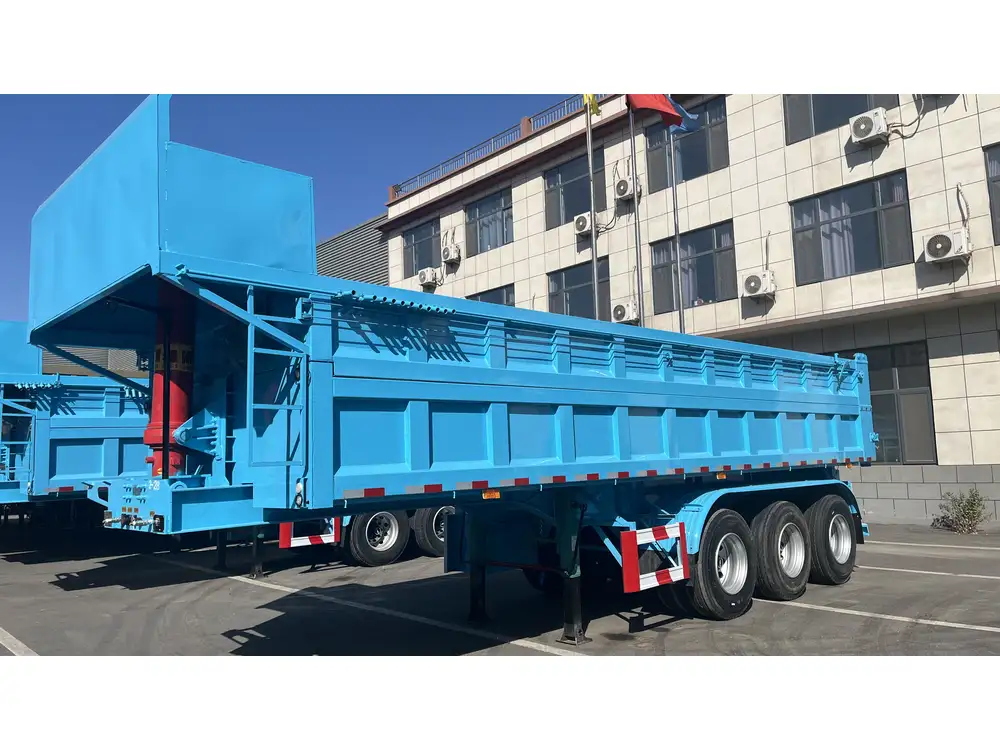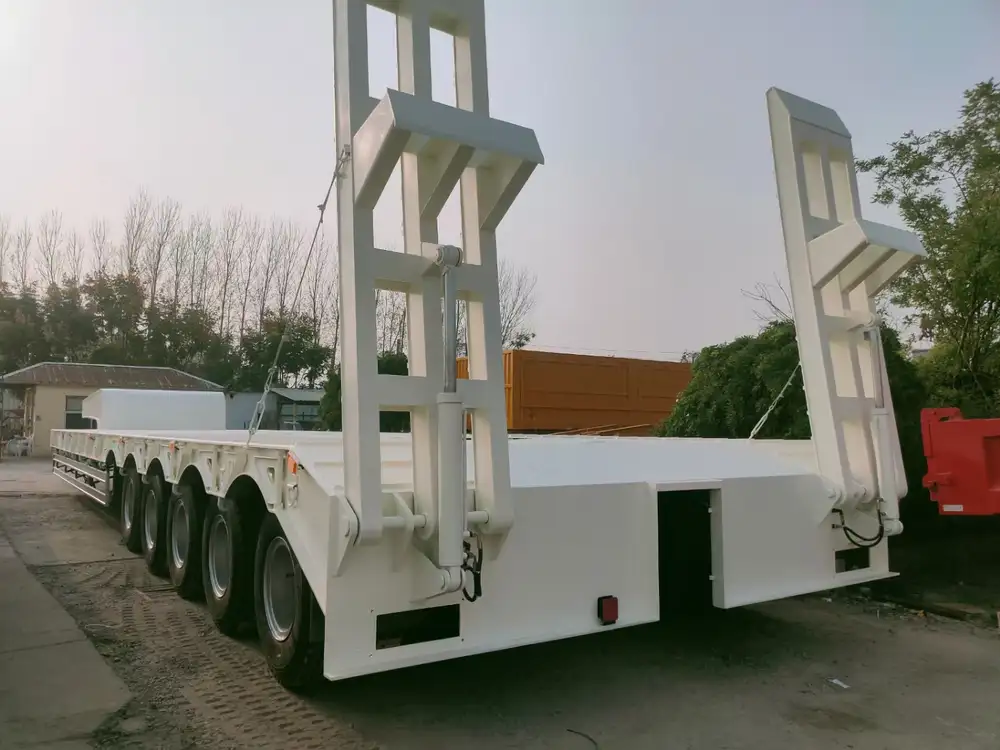Purchasing a used semi-trailer represents a significant investment, and it’s essential to make an informed decision to ensure you get the best value for your hard-earned money. This guide aims to outline critical factors prospective buyers must consider, backed by detailed analysis and structured insights to facilitate effective decision-making.
Understanding Your Needs
Identify the Purpose of the Semi-Trailer
Before delving into the specs and condition of a used semi-trailer, it’s vital to pinpoint the intended use. Will you transport general cargo, refrigerated goods, or perhaps heavy equipment? Each purpose dictates different requirements.

Common Types of Semi-Trailers:
| Type | Description | Ideal Use Cases |
|---|---|---|
| Flatbed Trailers | An open platform with no sides or roof | Construction, machinery transport |
| Refrigerated Trailers | Insulated and equipped with temperature controls | Perishable goods, pharmaceuticals |
| Dry Van Trailers | Enclosed trailers designed for dry freight | General goods, retail products |
| Tanker Trailers | Constructed to carry liquids | Chemicals, fuels, food-grade liquids |
| Lowboy Trailers | Designed for transporting heavy equipment at low heights | Heavy machinery |
Defining your needs early on helps refine your search, enabling you to compare options more effectively.
Key Features to Inspect
Structural Integrity
The foundational structure of a semi-trailer significantly influences its performance and longevity. Look for signs of damage or corrosion.
Checklist for Structural Integrity:
- Frame Condition: Inspect for rust, dents, or any signs of welding. A compromised frame can lead to costly repairs or unsafe conditions.
- Crossmembers: Look for any deformation or damage. Crossmembers support the trailer’s weight, and their integrity is crucial.
- Kingpin: Check for wear and tear; a damaged kingpin can lead to issues with coupling and trailer stability.

Suspension and Axles
The suspension system and axle configuration play a decisive role in how a semi-trailer handles loads and road conditions.
Axle Configuration Options:
| Configuration | Pros | Cons |
|---|---|---|
| Single Axle | Cost-effective, suitable for lighter loads | Limited load capacity |
| Tandem Axle | Better weight distribution, increased stability | More complex maintenance |
| Tri-Axle | Enhanced stability for heavy loads | Higher initial cost and maintenance |
Ensure the suspension system is in good working order; check for any air leaks in air-ride systems and look for cracked or worn leaf springs if equipped with a spring suspension.
Tires and Wheels
Tires are your primary contact with the road, thus critical for safe transportation.
Factors to Evaluate:
- Tread Depth: Use a tread depth gauge or the penny test. Ensure the tires have adequate tread for safe handling.
- Sidewall Condition: Look for cracks, bulges, or other signs of wear, which indicate age or potential failure.
- Alignment Issues: Uneven tire wear can signal misalignment; ensure alignment is within required specifications.
Braking System
A reliable braking system is paramount for safety. Assess the brake system thoroughly.
Braking System Components:
- Air Brake System: Ensure all air lines are intact without leaks. Check the compressor’s functionality and inspect the brake pads for wear.
- Electronic Stability Control (ESC): If equipped, ascertain that it’s operational, as it enhances braking efficiency.

Weight Ratings and Compliance
Every semi-trailer comes with specific weight ratings, which inform about its load-bearing capacity.
Important Ratings:
- Gross Vehicle Weight Rating (GVWR): The maximum weight a trailer can safely transport, including its own weight.
- Payload Capacity: Determines how much cargo the trailer can carry.
Ensure that the trailer complies with local regulations and is suited to your operational needs. Non-compliance can result in fines and operational issues.
Aesthetic and Maintenance Considerations

Condition of the Trailer Body
The exterior condition often reflects how well the trailer has been maintained.
What to Look For:
- Paint and Finish: Look for signs of fresh paint or body work which may conceal underlying issues.
- Rust and Corrosion: Pay attention to areas prone to rust; undercarriage and wheel wells are common trouble spots.
History of Maintenance and Repairs
A well-documented maintenance history is an invaluable asset when purchasing a used semi-trailer.
- Service Records: Ask to see maintenance logs detailing repairs and servicing.
- Previous Usage: Understanding how the trailer was previously utilized can provide insights into its condition.
Documentation and Legal Considerations

Title and Registration
Ensure all paperwork is in order. Verifying the title can prevent future headaches.
- Title Status: Always check if the title is clean and not marked as salvage or reconstructed.
- VIN Verification: Cross-reference the Vehicle Identification Number with records to confirm it hasn’t been reported stolen.
Inspection and Warranty
Before purchase, ensure a thorough inspection by a qualified professional.
Potential Inspection Criteria:
- Regulatory compliance checks
- Mechanical assessments
- Safety checks
Some dealers offer limited warranties on used equipment, providing an additional layer of protection against defects.
Cost Analysis

Pricing Trends for Used Semi-Trailers
Understanding what’s typical in the market can assist in negotiations.
Factors Influencing Price:
- Age & Condition: Older trailers tend to be cheaper but may require more repairs.
- Market Demand: Seasonal shifts and regional demand can affect pricing.
- Brand Reputation: Well-regarded brands tend to hold value better.
Example Price Range by Type
| Trailer Type | Average Price Range (Used) |
|---|---|
| Flatbed | $10,000 – $30,000 |
| Refrigerated | $20,000 – $60,000 |
| Dry Van | $12,000 – $35,000 |
| Tanker | $25,000 – $75,000 |
| Lowboy | $15,000 – $50,000 |
Negotiation Tips
When you’ve selected a suitable semi-trailer, negotiation can influence your purchase price significantly.

Strategies for Effective Negotiation:
- Research Comparables: Bring data about similar trailers to back your negotiation points.
- Highlight Necessary Repairs: If repairs are needed, use that as a bargaining chip to lower the price.
- Be Prepared to Walk Away: Sometimes, being willing to leave is the strongest negotiating tactic.
Conclusion: Making the Right Choice
The decision to purchase a used semi-trailer requires thorough consideration of multiple factors, from understanding your specific needs and inspecting critical features to analyzing cost and preparing for negotiations. Each of these dimensions plays a role in ensuring that you make a sound investment that meets your operational criteria and offers longevity and reliability.
Evaluate options against each criterion outlined in this guide to bolster your confidence in your purchase decision. By approaching the acquisition process systematically, you will be better positioned to secure a used semi-trailer that is not only functional but also serves your business objectives effectively.



